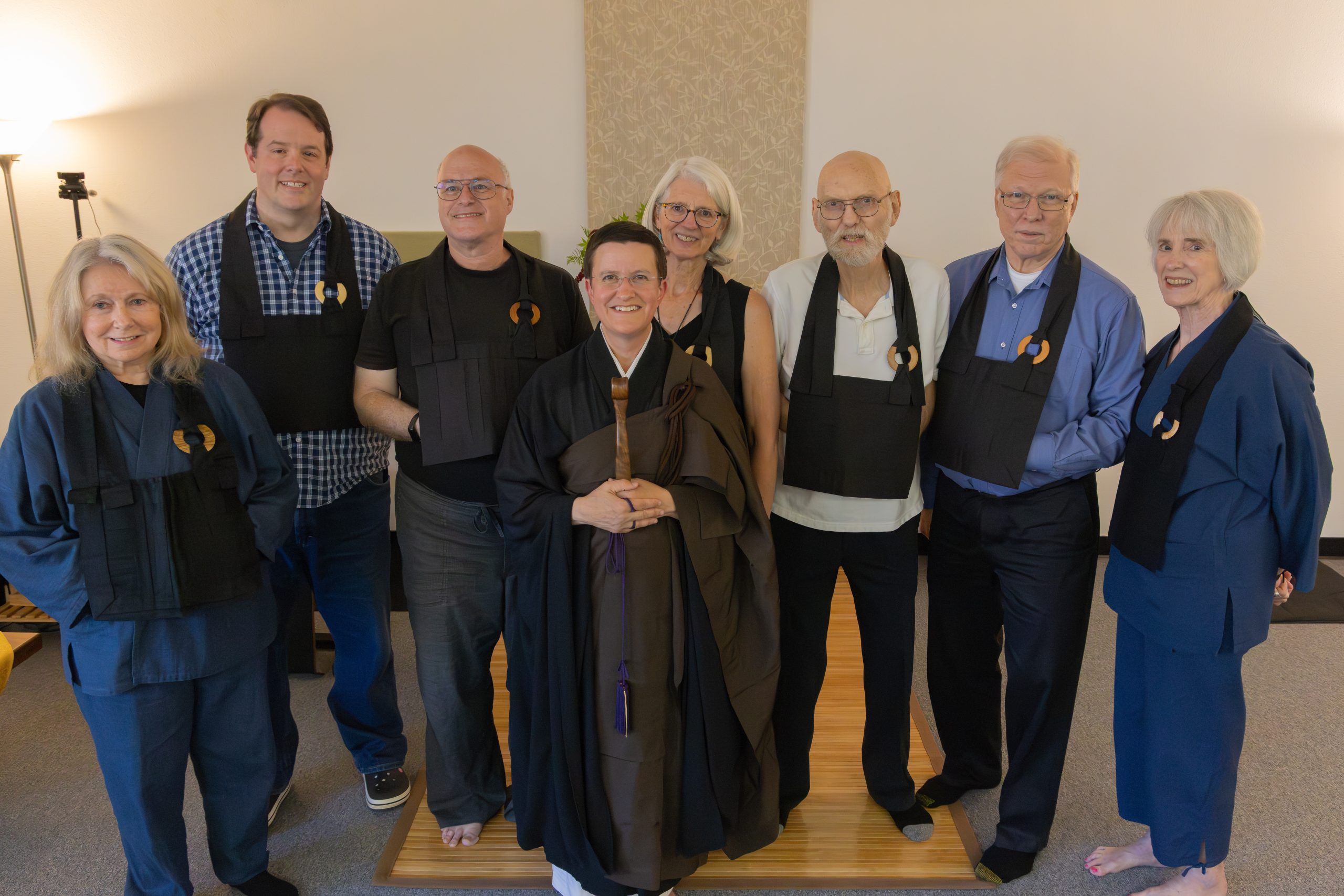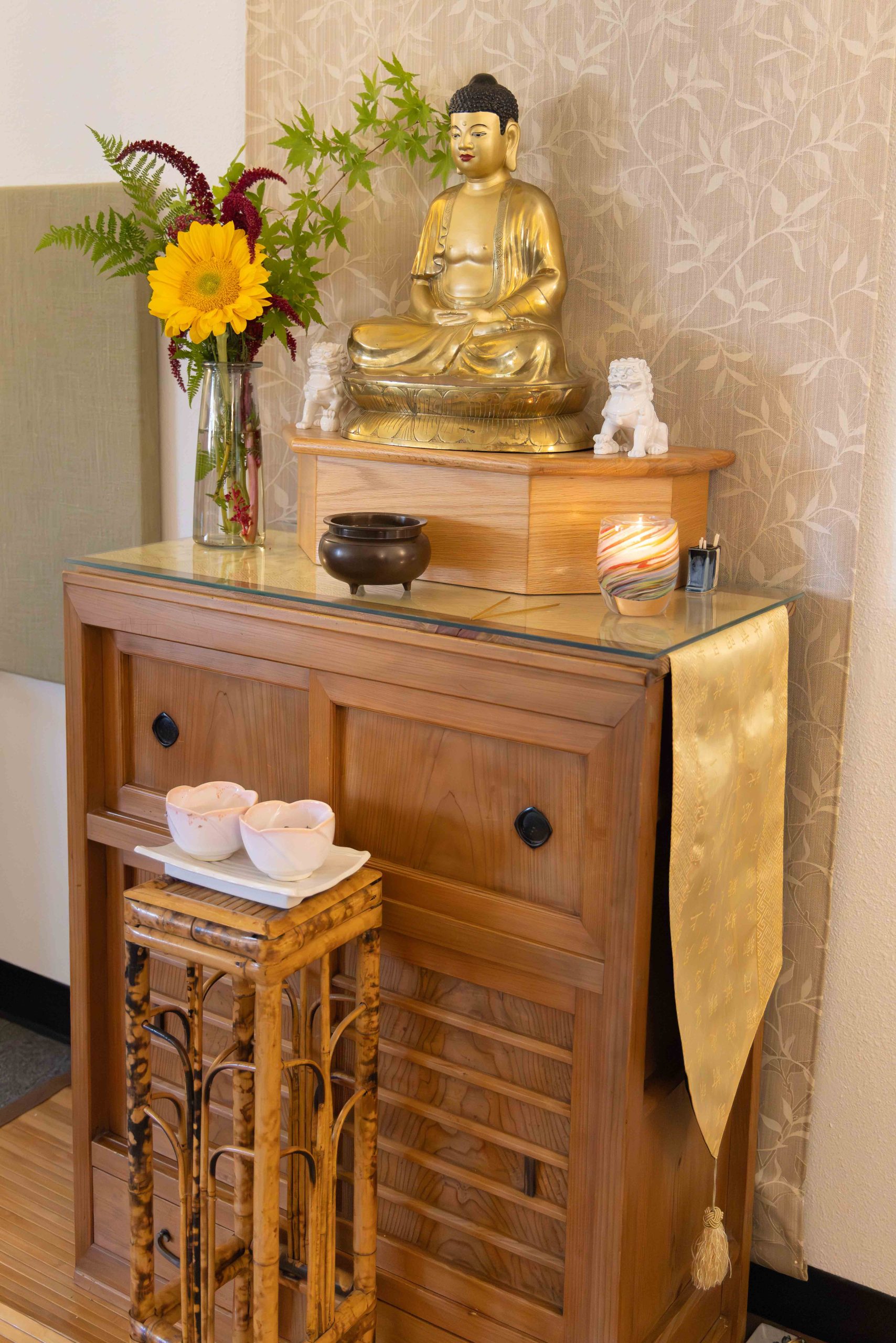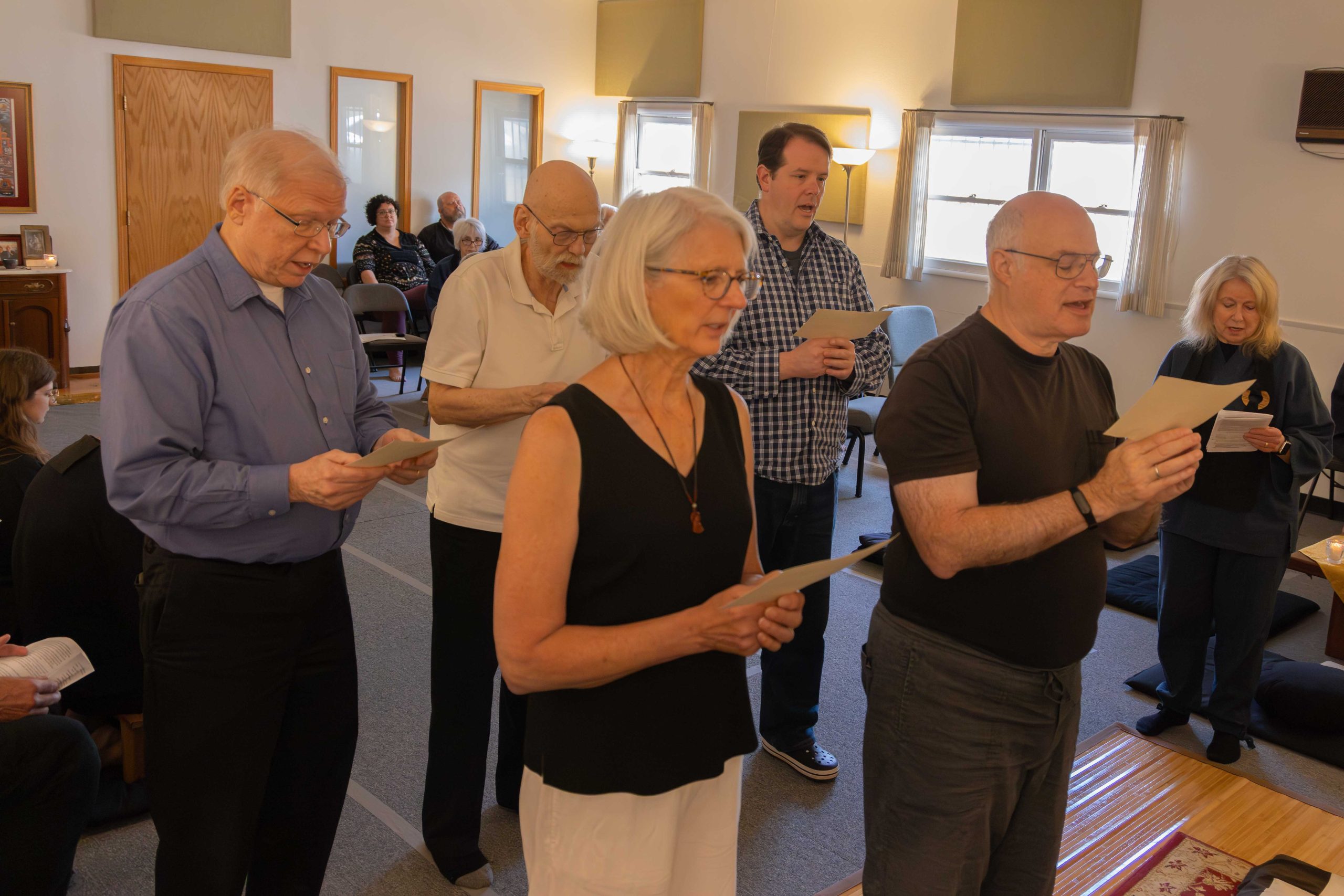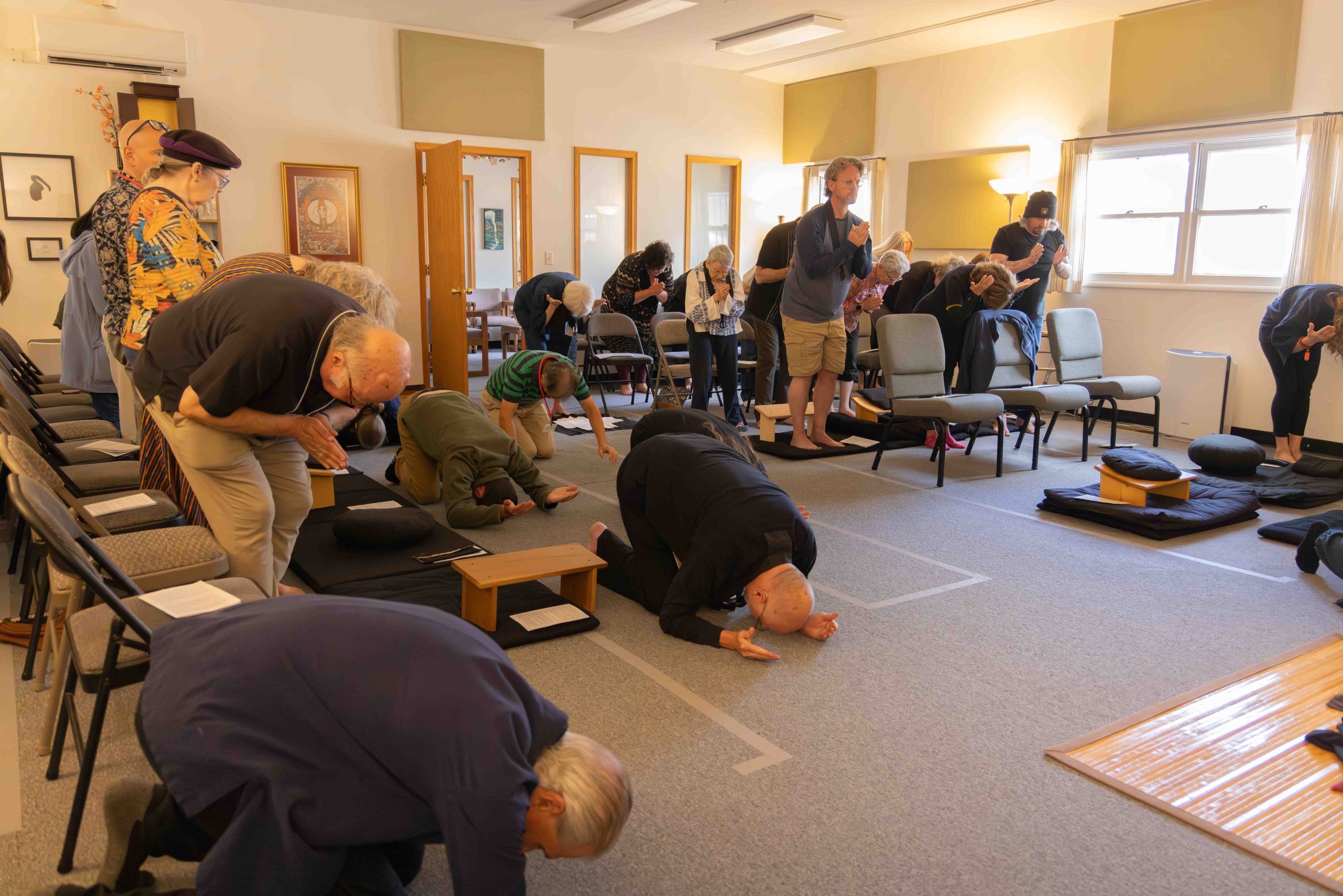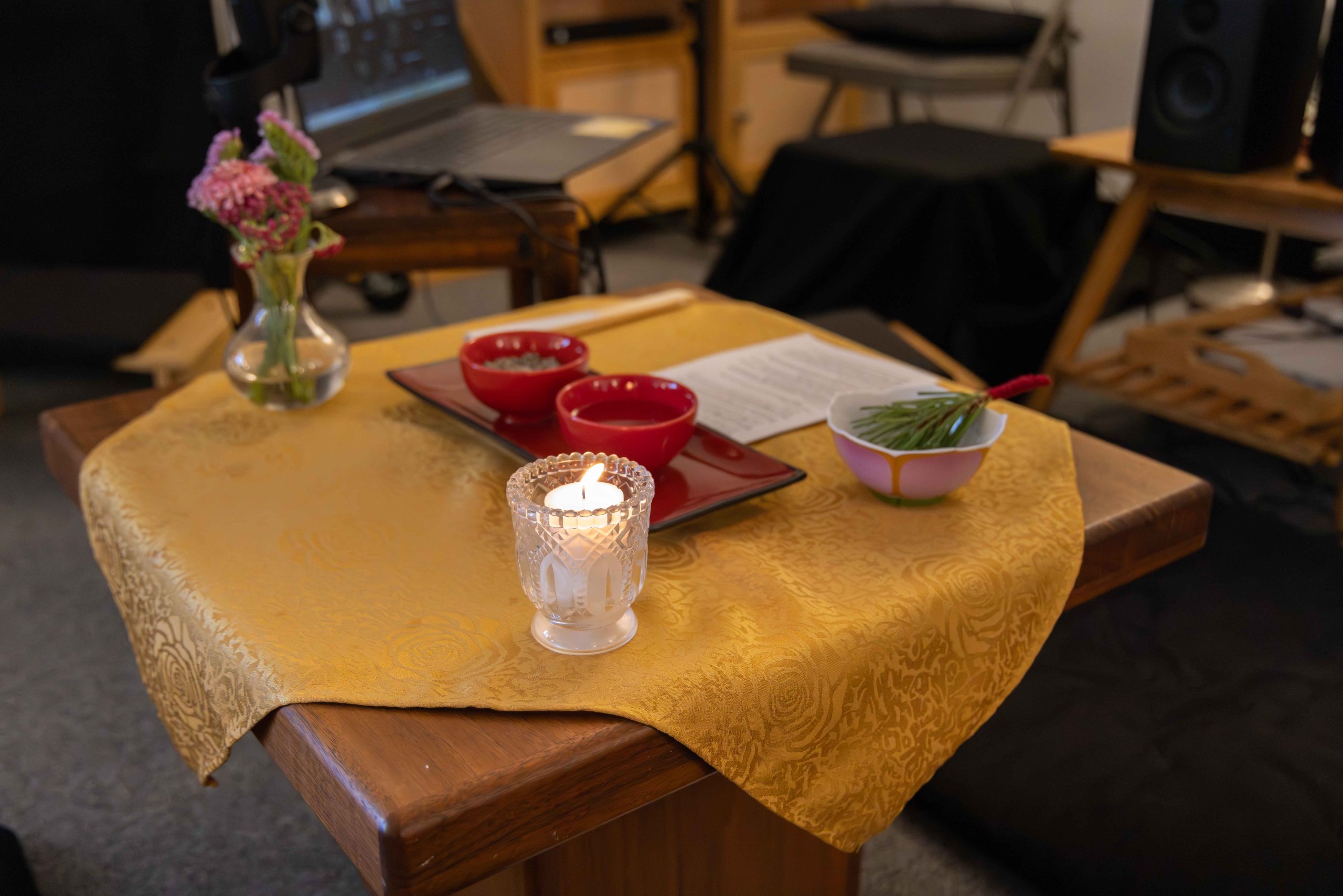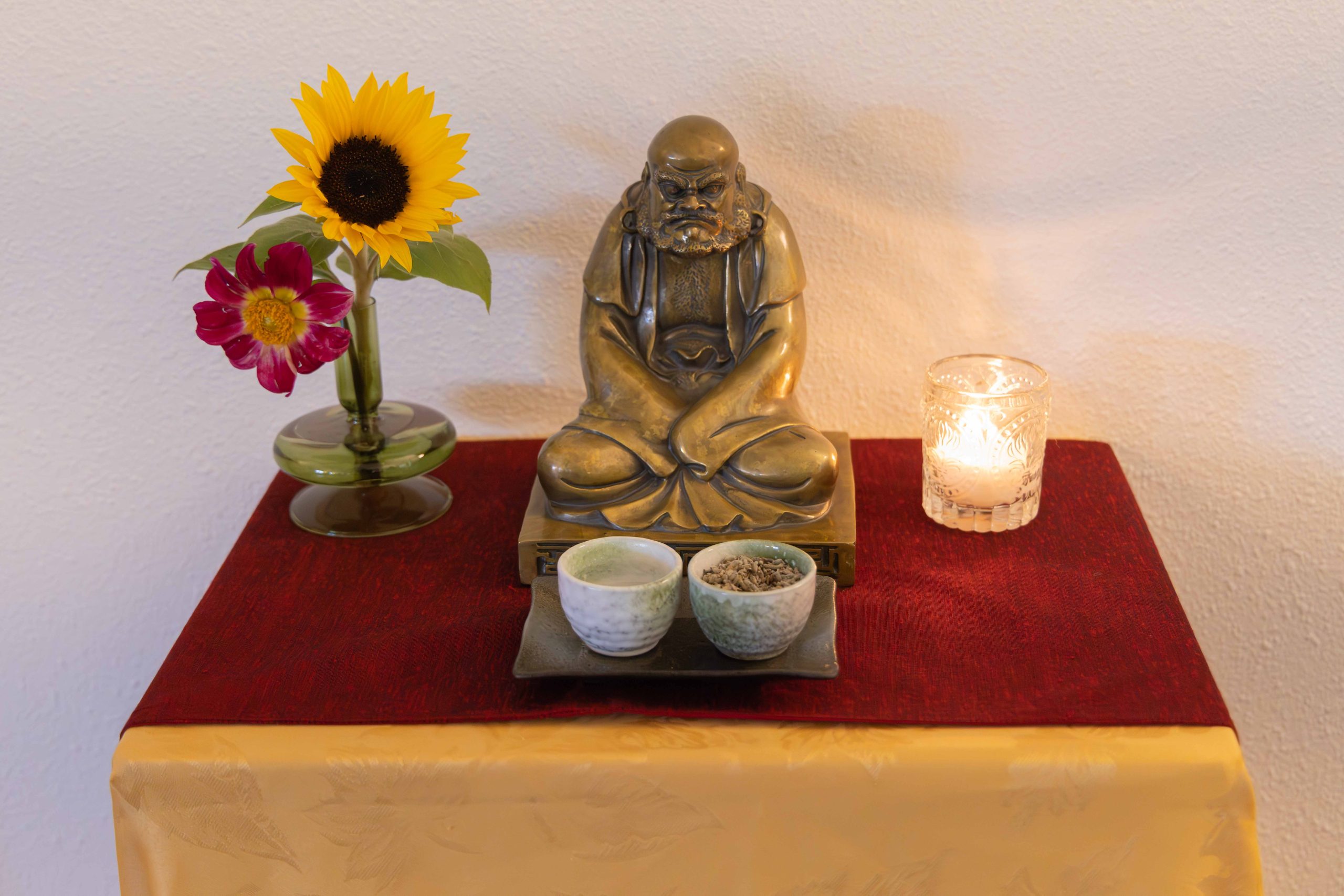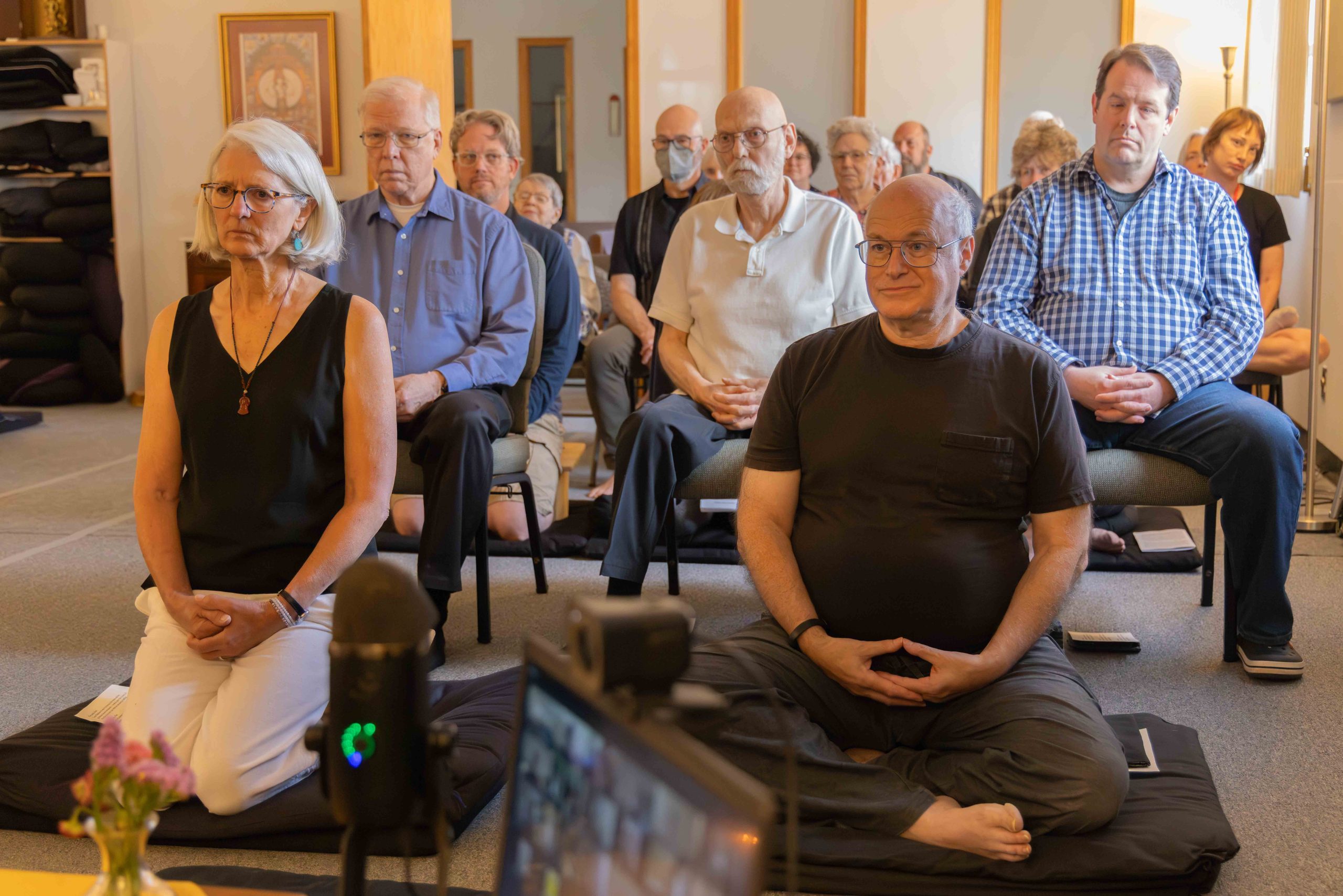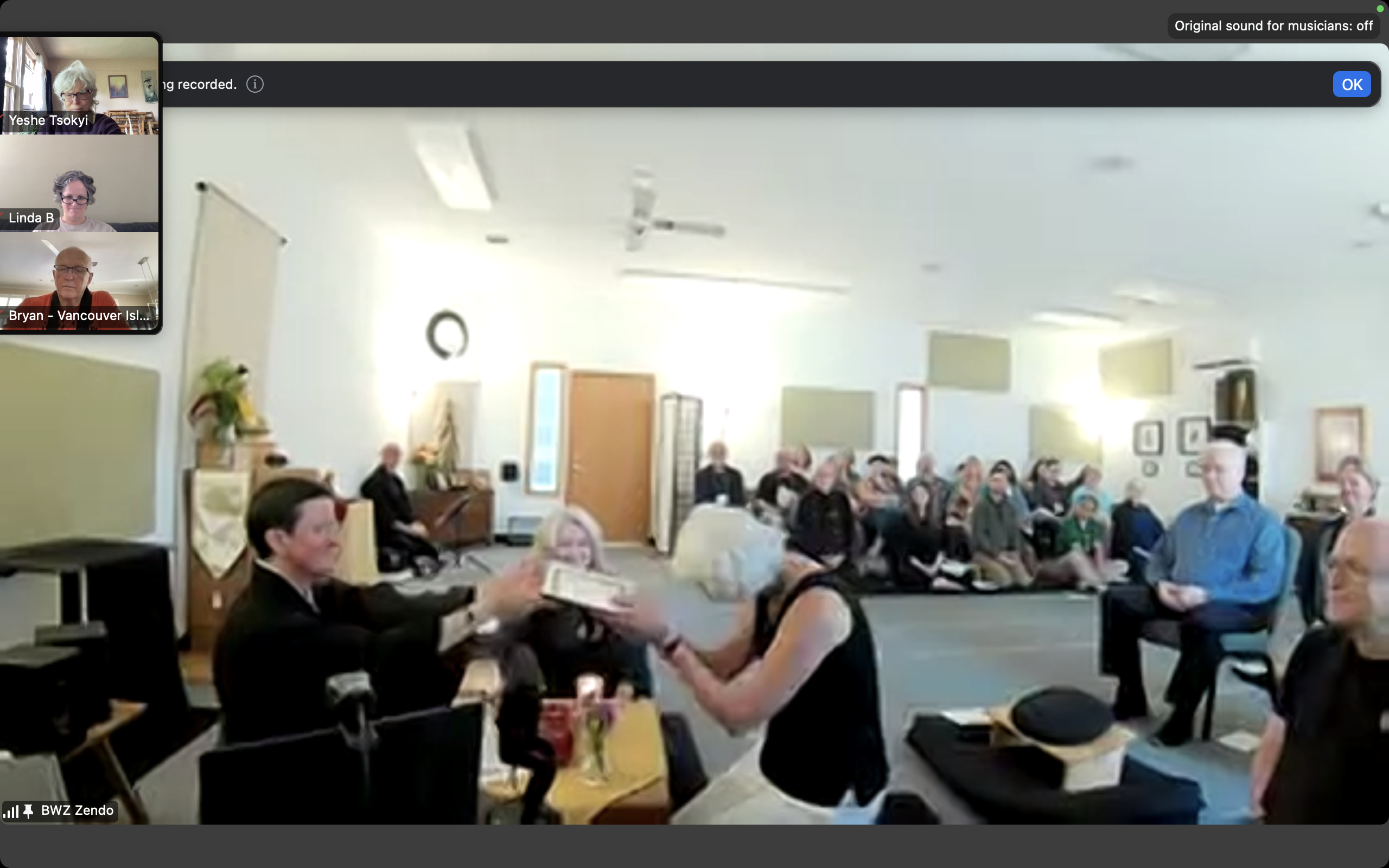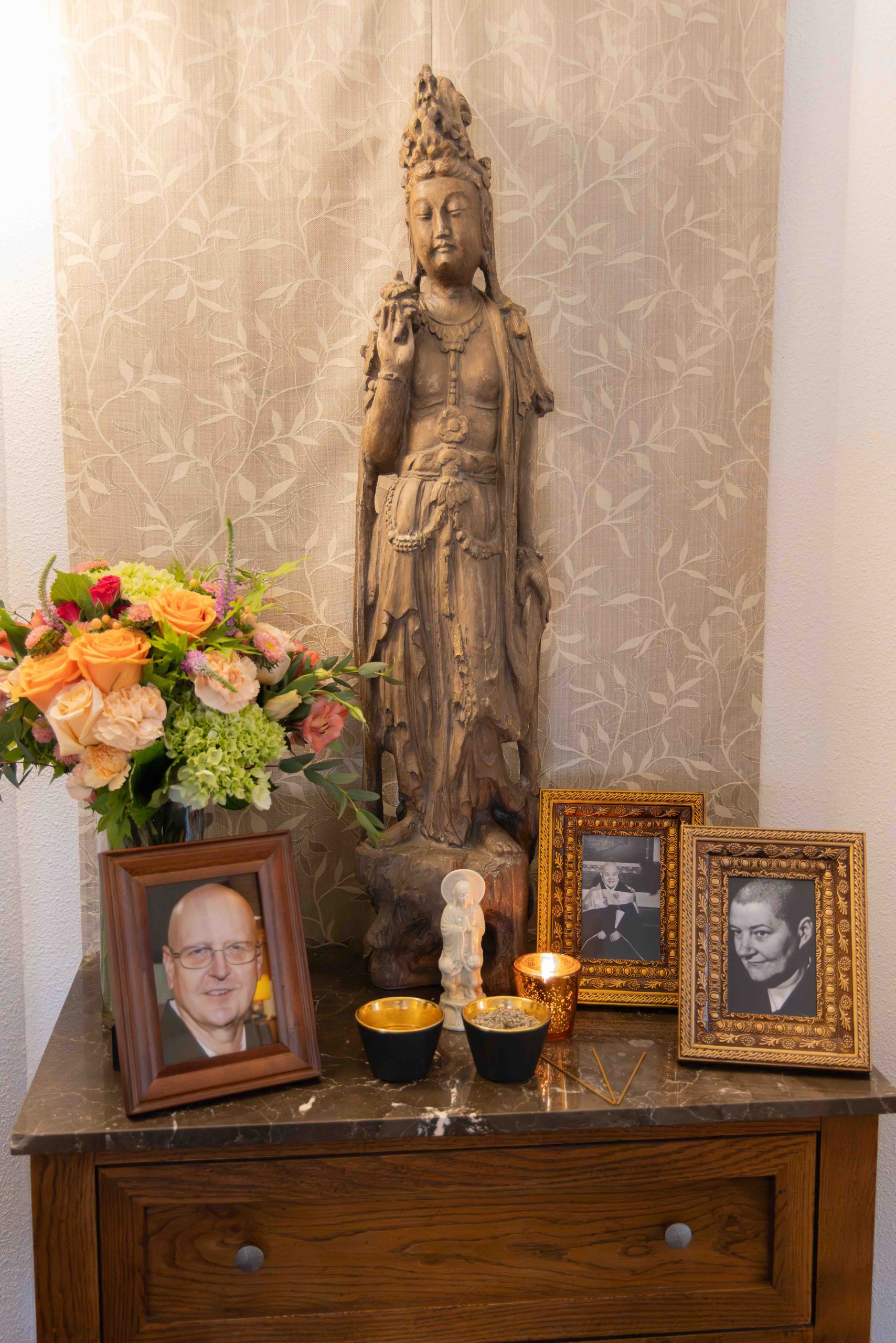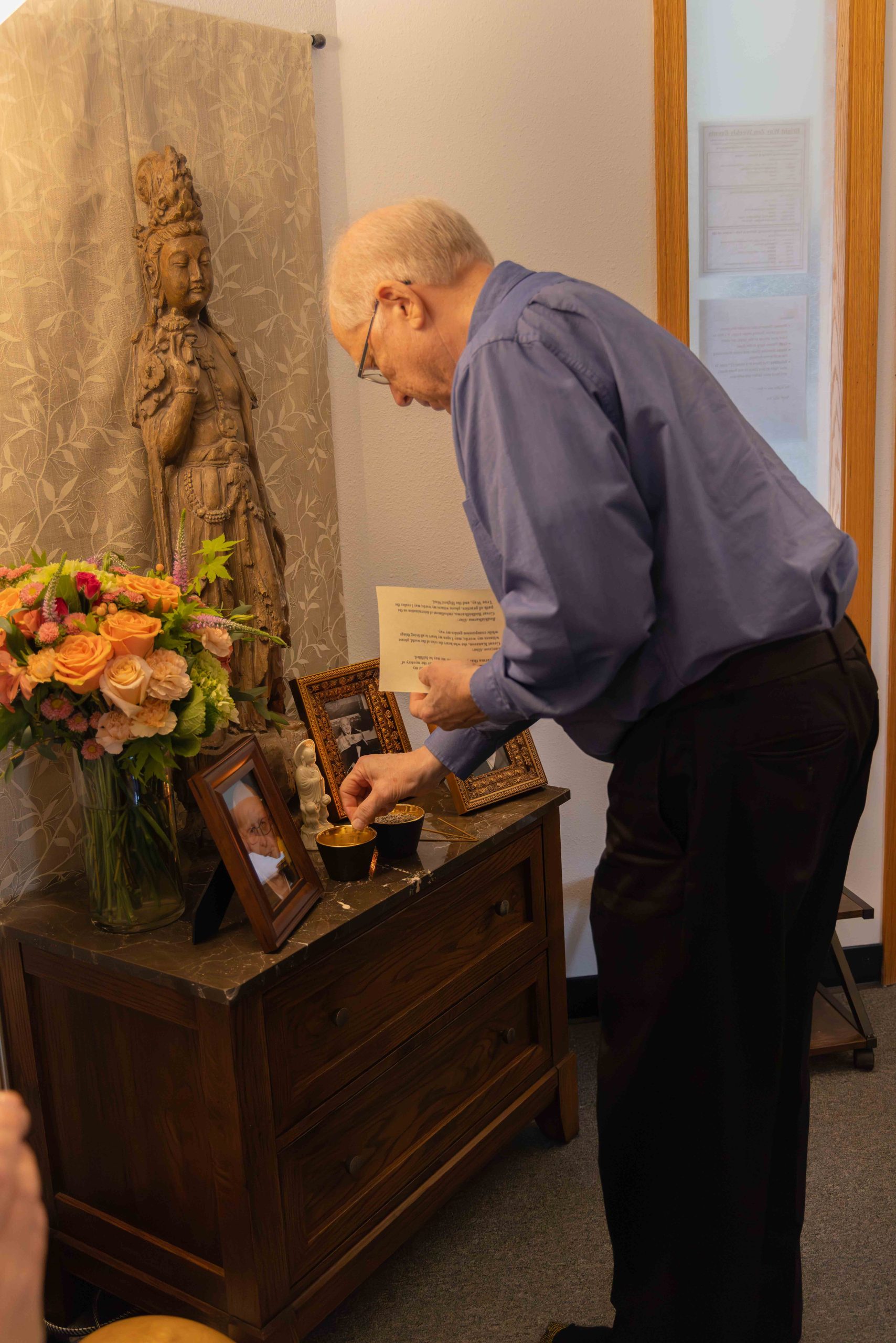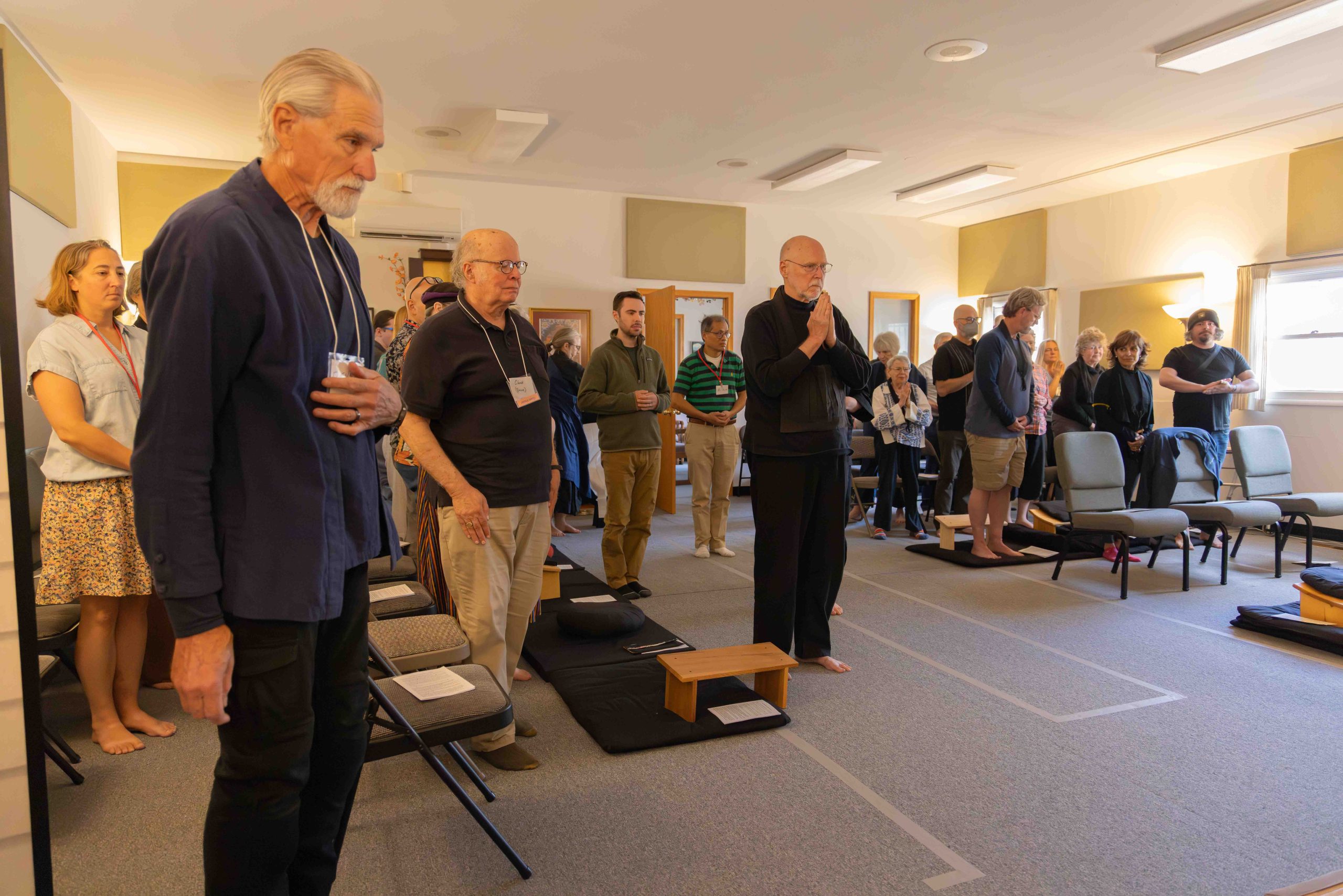A proud day for Bright Way Zen: The Zaike Tokudo ceremony
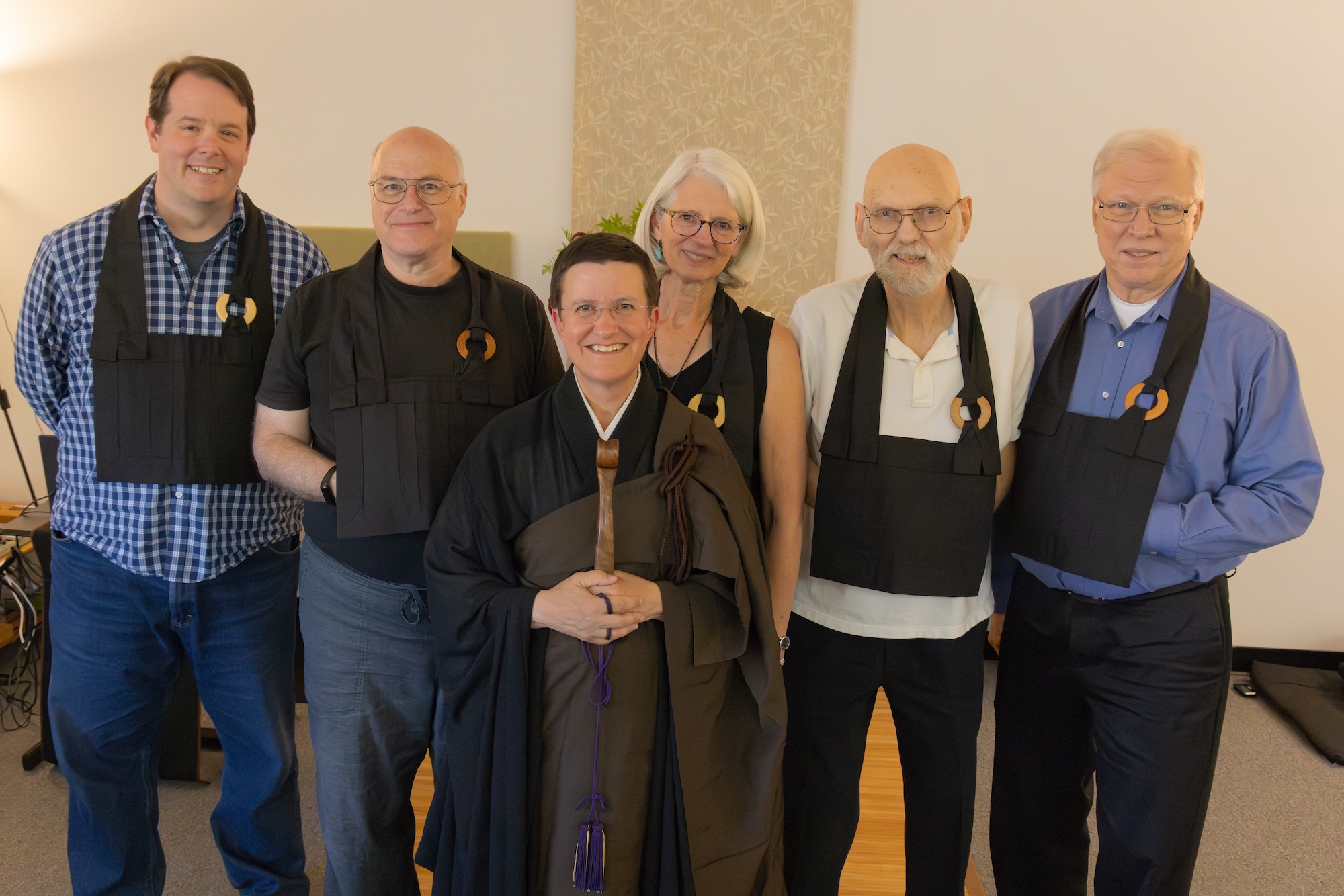
Sunday, July 27, was a very special day at Bright Way Zen. For the first time in eight years, the Sangha held a Zaike Tokudo, or lay ordination, ceremony to honor five long-time members. Zaike Tokudo literally means “staying at home to accomplish the way,” and is the lay corollary of “Shukke Tokudo,” or monastic ordination.
We had a record-breaking number of members (and their families) who witnessed the ceremony: About 45 in the Dirt Zendo, and 26 in the Cloud Zendo.
People who take the step of Zaike Tokudo have come to identify deeply with our lineage of Soto Zen, our Dharma Cloud lineage in particular, and the Bright Way Zen Sangha. Collectively, they are referred to as “Sangha Holders.”
In the Zaike Tokudo ceremony, in addition to re-taking the 16 bodhisattva precepts, ordinees made these five vows:
I vow to walk the path of the Buddha; living an ethical life and becoming enlightened.
I vow to study the Dharma; working to see the true nature of all things and all beings I encounter.
I vow to support the Sangha; helping myself and all beings attain peace and liberation.
I vow to live a life of generosity; benefitting the world in whatever ways I can.
I vow to live a life of stability; honoring commitments with patience and tolerance, remaining steadfast in practice and relationships.
During the ceremony, ordinees also received a Dharma name. Going forward, they will be known by their Dharma name within the Sangha. All BWZ Sangha Holders have the same “family name” (which goes first), Dakyo (pronounced DA-kyo). Da means “arrive,” and kyo means “native place.” Then they have a personal Dharma Name, which was chosen by Domyo to reflect something unique she sees in each person that they can aspire to cultivate further with their ordination:
Jim – Dakyo Kanshin (pronounced KAN-shin): “Perfect Faith”
Joan – Dakyo Yuka (pronounced YU-ka): “Subtle Fruit”
Mark – Dakyo Anjo (pronounced AHN-jo): “Abundant Hermitage”
Bruce – Dakyo Etsujo (pronounced ET-su-jo): “Generous Joy”
Bob – Dakyo Kyugen (pronounced KYOO-gen): “Investigate Source”
It was a great honor to witness this ceremony. The inductees have spent years preparing, through intensive Sangha involvement, Dharma study, and sewing their rakusus, a square cloth garment that they now wear around their neck during zazen.
Congratulations to all the inductees!
